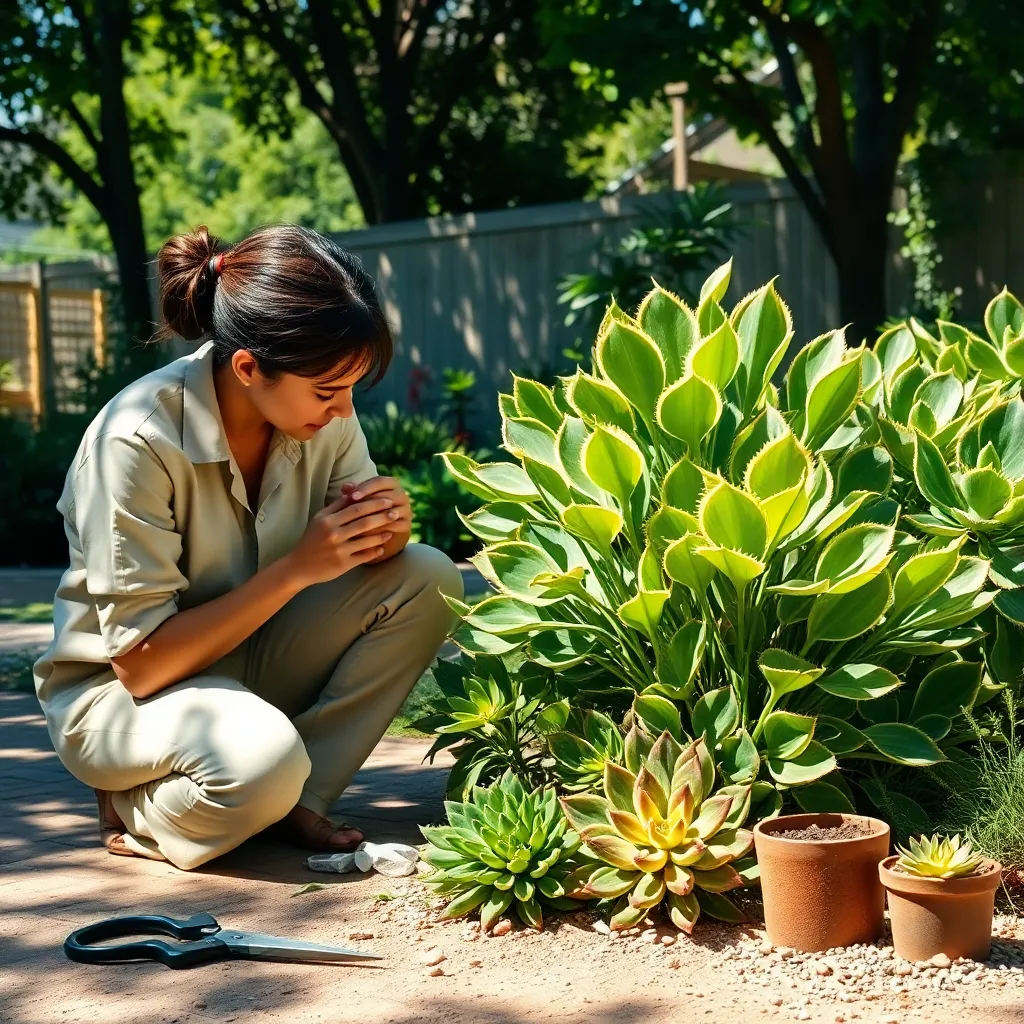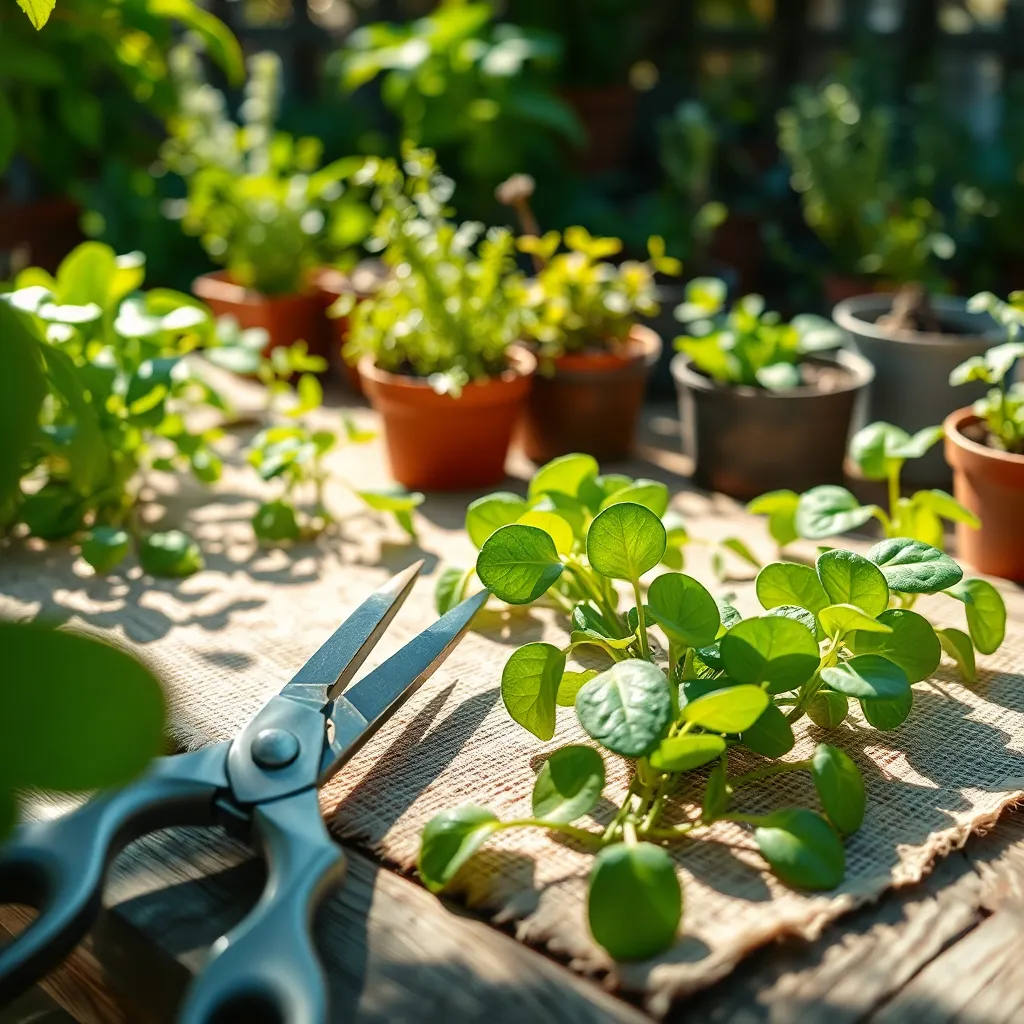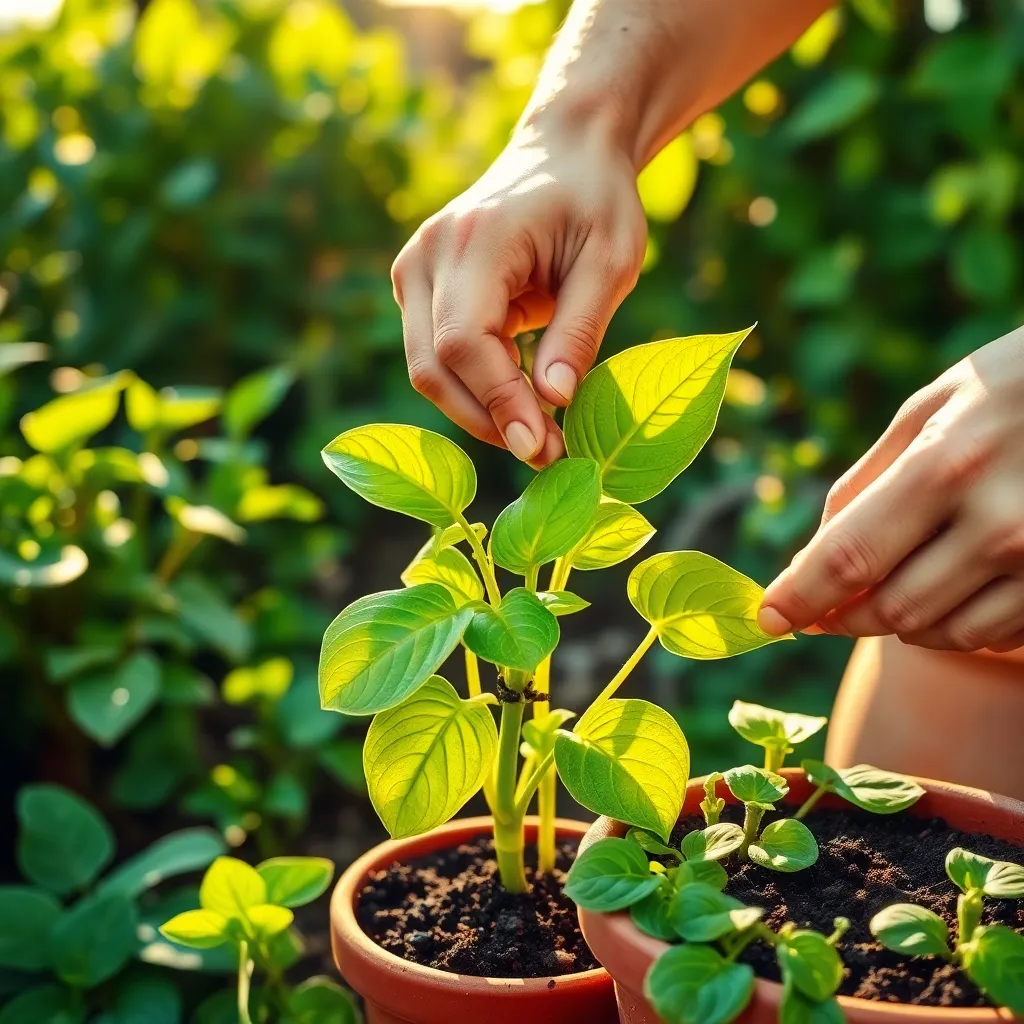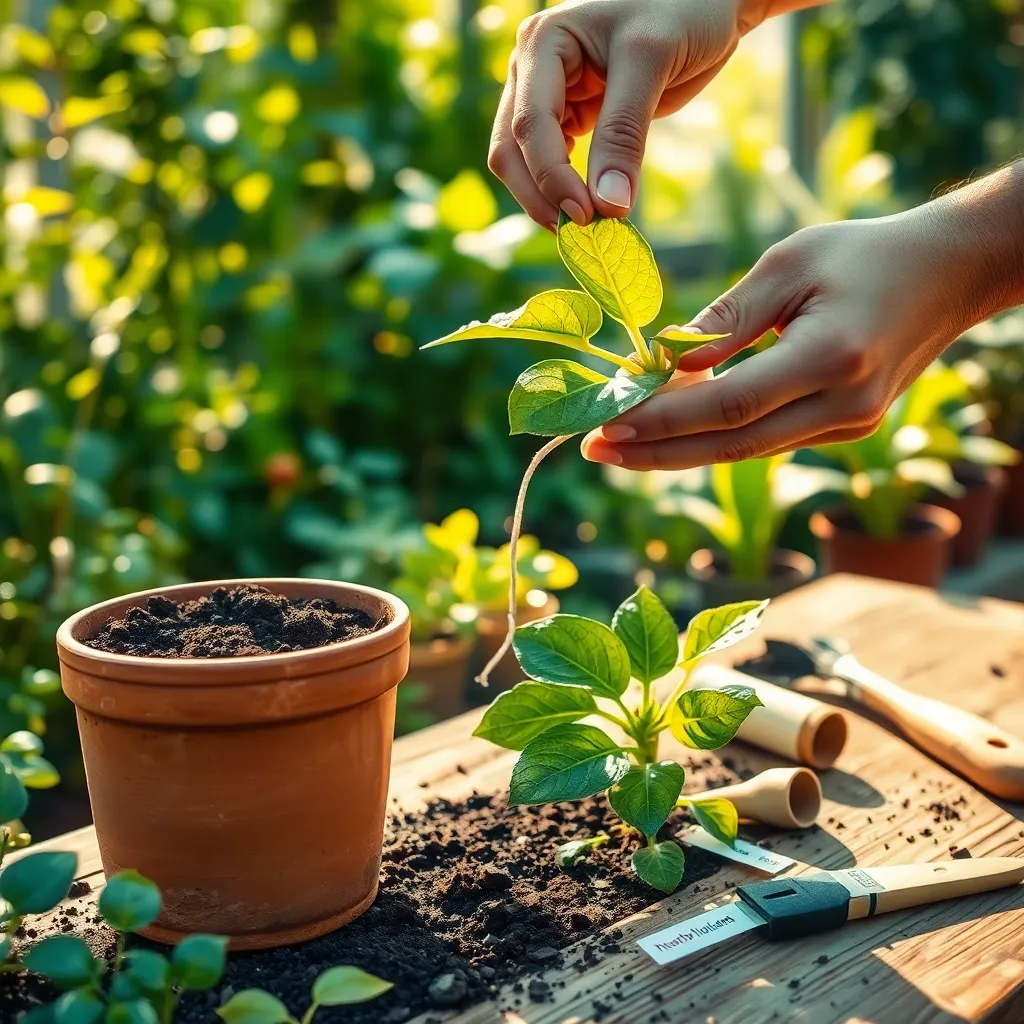Gardening is a journey that marries the allure of nature with the satisfaction of nurturing life, and one of its most rewarding practices is propagating plants from cuttings. Whether you’re a novice eager to expand your green thumb beyond the basics or a seasoned gardener looking to multiply your favorite flora, mastering this technique can transform your garden into a thriving oasis of abundance.
Propagation, in its essence, is an art form that allows you to create new plants from the ones you already treasure, offering a sustainable, cost-effective way to grow your garden. In this article, you’ll discover the step-by-step process of taking cuttings, understand the nuances of different plant types, and learn tips that ensure your cuttings flourish into robust new plants.
As you delve deeper, you’ll gain insight into selecting the right tools and timing, setting the foundation for your propagation success. We’ll explore the subtle science behind root development, and you’ll soon find yourself equipped with the confidence to propagate a variety of plants, from herbs to shrubs. By the end of this guide, you’ll not only have expanded your garden but also your gardening skills, making the world of plant propagation both thrilling and within reach.
Select Healthy Parent Plant

Choosing the right parent plant is crucial for successful propagation. Look for a plant that is vigorous and free of disease, as this will increase the chances of your cuttings thriving.
Ensure the parent plant has been well cared for, receiving adequate water and nutrients. A plant that is stressed or nutrient-deficient might not produce strong cuttings, which can hinder growth.
It’s beneficial to select a plant that has shown excellent traits such as fast growth or pest resistance. This way, you can pass these favorable characteristics onto your new plants, enhancing their chances of success.
When examining the plant, check for healthy, firm stems and vibrant, green leaves. These signs indicate that the plant is in good health and ready to be propagated.
For those with more experience, consider the time of year as a factor in choosing your parent plant. Many plants are best propagated in spring or early summer when they are actively growing, ensuring a more robust start for your cuttings.
Cut Stem at an Angle

When propagating plants from cuttings, cutting the stem at an angle is crucial for success. This technique increases the surface area available for rooting, thereby enhancing the plant’s ability to absorb water and nutrients.
It’s important to use a sharp, clean knife or pruning shears to make your angled cut, which helps prevent damage to the plant tissue. A 45-degree angle is generally recommended, as this provides the ideal balance between surface area and structural integrity.
After making the cut, consider dipping the end of the stem in a rooting hormone to promote faster root development. Rooting hormone is especially helpful for beginners as it increases the chances of successful propagation, although experienced gardeners may choose to experiment with or without it.
Place the cutting in a pot filled with a well-draining soil mix, such as a combination of perlite and peat moss. Ensure the soil remains consistently moist but not waterlogged, as overly wet conditions can lead to rot.
Remove Lower Leaves

Once you’ve cut the stem at an angle, it’s crucial to remove the lower leaves from the cutting. This step helps focus the plant’s energy on root development rather than maintaining foliage. By removing these leaves, you’ll also prevent any parts of the plant from being submerged in water or soil, which could lead to rot. It’s important to leave only a few leaves at the top so the plant can still photosynthesize efficiently.
To remove the leaves, gently pinch or cut them at the base of the leaf stem. Always use clean, sharp tools to avoid damaging the plant or introducing infections. For those new to propagation, a simple pair of scissors or a small pruning shear will suffice. More experienced gardeners might prefer specialized tools like bonsai clippers for precision.
After trimming the lower leaves, ensure the exposed stem nodes are ready for the next step in propagation. These nodes are where new roots will emerge, so they need to be clean and free of debris. For optimal root development, consider dipping the cut end into a rooting hormone. This is particularly beneficial for woody or semi-woody plants, as it can significantly enhance rooting success rates.
It’s also essential to consider the type of plant when assessing how many leaves to leave on the cutting. Some plants, like succulents, may need only one or two leaves to thrive, while others, such as herbs, can support a few more. Always adjust your approach based on the specific needs and characteristics of the plant species you are working with. This tailored care will increase your chances of successful propagation and result in a healthy, thriving new plant.
Dip Cuttings in Rooting Hormone

After removing the lower leaves, it’s time to dip your cuttings in rooting hormone to encourage root development. Rooting hormone is a powdered or liquid substance that contains plant hormones, which can significantly increase the chances of successful propagation.
Choose a high-quality rooting hormone that is suitable for the type of plant you are propagating. Different plants may require different concentrations, so always read the instructions provided on the product label for best results.
Before dipping, it’s important to slightly moisten the cut end of the cutting to help the hormone adhere better. This step ensures that the rooting hormone sticks thoroughly, maximizing the contact between the hormone and the plant tissue.
Gently dip the cut end of the plant into the rooting hormone, ensuring that a thin layer coats the surface. Avoid excessive amounts, as too much hormone can actually inhibit rooting and harm the cutting.
After applying the rooting hormone, plant the cutting in a suitable growing medium such as a mix of perlite and peat moss. This mixture provides excellent drainage and aeration, which are crucial for healthy root formation.
Water the cuttings lightly to avoid waterlogging, maintaining moisture without saturating the medium. Consistent care and patience are key, as cuttings may take several weeks to establish roots depending on the plant species and environmental conditions.
Plant in Moist Potting Mix

Now that your cuttings are prepared, it’s time to plant them in a suitable medium. Use a moist potting mix designed for cuttings, which usually includes a combination of peat, perlite, and vermiculite to retain moisture while providing excellent drainage.
Before planting, ensure the potting mix is evenly moist but not waterlogged. You can check this by squeezing a handful of the mix; it should hold together without dripping water, indicating the right moisture level.
Insert each cutting into the potting mix, making a hole with a pencil or your finger to avoid damaging the hormone coating. Plant the cuttings deep enough so that they can stand upright, with at least one or two nodes buried to encourage root growth.
Choose a container with drainage holes to prevent water accumulation, which can cause root rot. If you’re planting multiple cuttings in one container, space them adequately to allow air circulation, reducing the risk of fungal diseases.
Place the container in a warm, bright location but away from direct sunlight, which can dry out the cuttings. Maintain consistent moisture by mist-spraying the cuttings daily or covering them with a clear plastic bag to create a humid environment.
For more advanced gardeners, consider using a heat mat under the container to promote root development, especially in cooler climates. Monitor the cuttings regularly, removing any that show signs of mold or decay to ensure the health of the remaining plants.
Conclusion: Growing Success with These Plants
In nurturing plant cuttings, we unearthed five essential relationship concepts: patience, nurturing, communication, resilience, and growth. Like plants, relationships thrive when we patiently allow them to develop, nurture them with care and attention, communicate openly about needs and changes, show resilience in the face of challenges, and embrace the growth that comes from shared experiences.
As your immediate next step, consider choosing one relationship in your life to apply these principles today. Whether it’s taking a moment to really listen to a loved one or showing patience during a trying time, small actions can lead to significant growth.
To ensure these insights are always at your fingertips, bookmark this article now. Doing so will allow you to revisit these powerful concepts whenever you need a relationship boost or a gentle reminder of how to cultivate meaningful connections.
Remember, just as a cutting transforms into a flourishing plant, so can your relationships blossom with the right care and attention. By integrating these principles into your daily interactions, you are laying the foundation for lasting relationship success. Here’s to growing together!

